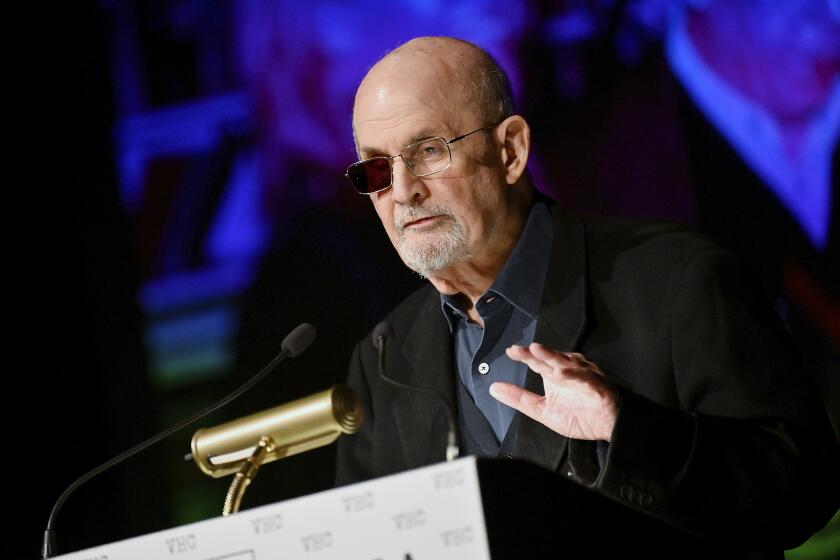The digital world order
ONLY a few decades into our digital evolution, human knowledge, once the domain of great libraries and universities, is just a Google search away. Interpersonal connections can be made instantaneously, conversations downloaded and fleeting thoughts logged for all to see.
Technology has emboldened us. It allows us to access information so quickly that there is no need to understand it deeply. It also lets us interact across various media and find community in places that previous generations could never have imagined. Ours is a moment in time, Henry Jenkins writes in his new book, “Convergence Culture,” when “lives, relationships, memories, fantasies, desires ... flow across media channels.”
On one level, convergence refers to the breaking down of walls between methods of communication (telephone and telegraph) and mass communication media (newspapers, radio, television and the Internet). Jenkins sees a simultaneous reshaping of the relationships among individuals, media audiences, content and its producers -- and therefore of popular culture itself.
Online communities have emerged solely to ponder what will happen on the television show “Survivor.” Harry Potter fans around the globe collectively produce a Web newspaper called the Daily Prophet that its young creator labels a “friendly utopian society.”
Whether these links are profound and the relationships forged through them can exist offline hardly matters. In many ways, we’ve become what historian Daniel J. Boorstin warned about in 1961: “the first people in history to have been able to make their illusions so vivid, so persuasive, so ‘realistic’ that they can live in them.”
Jenkins, founder of the Massachusetts Institute of Technology’s comparative media studies program, sees convergence culture as the latest in a series of intellectual movements. It is the point “where old and new media collide, where grass-roots and corporate media intersect, where the power of the media producer and the power of the media consumer interact in unpredictable ways.”
Examples abound: Rupert Murdoch buys MySpace.com, then makes a deal with Google to put ads on the popular social networking site. More problematic is what happened when Chevrolet invited consumers to create their own online commercials for its Tahoe sport utility vehicle; instead of paeans to the SUV, environmental activists made 30-second clips lambasting it.
Jenkins also zeroes in on stories occurring on the edges of commercially successful TV shows, movies and other media. In each case, he shows how fans’ efforts collided with the interests of mainstream media producers. Some of those collisions were unintended, others premeditated. In all cases, there was profit to be made. “[T]he most valued consumer,” writes Jenkins, “may be the one who is most passionate, dedicated, and actively engaged. Far from marginal, fans are the central players in a courtship dance between consumers and marketers.”
Jenkins describes how creators of the “Matrix” films worked across different media to tell their stories -- and to draw in fans: “The filmmakers plant clues that won’t make sense until we play the computer game. They draw on the back story revealed through a series of animated shorts, which need to be downloaded off the Web or watched off a separate DVD. Fans raced, dazed and confused, from the theaters to plug into Internet discussion lists, where every detail would be dissected and every possible interpretation debated.”
He captures amateur filmmakers trying to recast “Star Wars” (in some cases with creator George Lucas’ tacit blessing), using everything from action figures to sound clips from “Lawrence of Arabia” -- and the legal complications that ensued. Perhaps this is what happens when young boys and girls who long to be Jedi knights, to wield light sabers and pilot the Millennium Falcon, realize those dreams will never come true: They use their computers to try to be like Lucas.
In another era, the discovery that no matter how hard we practiced we would never become Luke or Leia, Batman or Robin would be a cornerstone of growing up, lumped into a pile with similar epiphanies about Santa Claus and the Easter Bunny. But ours is a consumer-driven society and media conglomerates have become shrewd producers. As Jenkins illustrates, they try to capture or control the power of a product’s fan base, offering opportunities for the most rabid fans to use, even design, products targeted especially for them.
So, although we cannot become one of the title characters, we can live in their universe, courtesy of the “massively multiplayer online role playing games” such as Star Wars Galaxies. Sometimes, such games can be serious fare: The citizen-editor of a newspaper created for the Sims Online website was temporarily booted from the virtual world in 2002 when he wrote an expose about teens selling cyber-sex for game credit.
Jenkins tries not to over-analyze the people and communities he is describing. He prefers “to document conflicting perspectives on media change rather than to critique them.... [I]f the public doesn’t get some insights into the discussions that are taking place, they will have little to no input into decisions that will dramatically change their relationship to media.”
This is the book’s greatest strength, as well as its most glaring weakness.
Jenkins is an astute observer of media culture and his insights are usually spot-on. By presenting a relatively straightforward portrait of how convergence culture operates, he intends his book to be a powerful tool both now and in the future. But the notion that his book can somehow be a springboard for the public to consider the consequences of convergence is misplaced.
“Convergence Culture” is a dense read, more academic treatise than accessible text, especially for those less media savvy and perhaps not as enthusiastic as Jenkins and his media studies peers. He relies on philosopher Pierre Levy’s writings about digital technologies and knowledge communities so heavily that they begin to feel like a crutch. Jenkins also has a rather annoying habit of falling into the royal we: “As we have suggested,” “We have identified.”
Many of the chapters of “Convergence Culture” appeared first as lectures and articles, and too often read like pieces of a patchwork that have not been fully sewn together. In many ways, the examples seem to guide the themes, rather than the other way around.
A brief section tracing the evolution of American folk and mass cultures -- and explaining how convergence culture is a natural progression from those movements -- buried halfway through the book, when it deserves explanation sooner and to be expanded upon. Understanding that sequence might also have helped an ordinary reader better appreciate Jenkins’ theory of convergence.
Still, this is a book to be praised. It raises many issues. At what point do copyright protections fail to make sense? Do online communities offer a sort of democracy that no longer exists anywhere else? Are consumers so focused on the hows and the whats of the digital universe that we risk never understanding the whys? And do we really care?
It might appear, at least at the outset, that convergence culture represents a triumph of quantity over quality, of profit over art, in which one squelches the other. But it’s more nuanced than that. We are witnessing a new age of the amateur, in which anyone with a bit of tech savvy and some raw talent has the potential to find an audience.
At its best, convergence culture means that poets, musicians, artists and writers also can distribute their work outside mainstream media, find dedicated fans and reap rewards they might never otherwise obtain.
More to Read
Sign up for our Book Club newsletter
Get the latest news, events and more from the Los Angeles Times Book Club, and help us get L.A. reading and talking.
You may occasionally receive promotional content from the Los Angeles Times.






